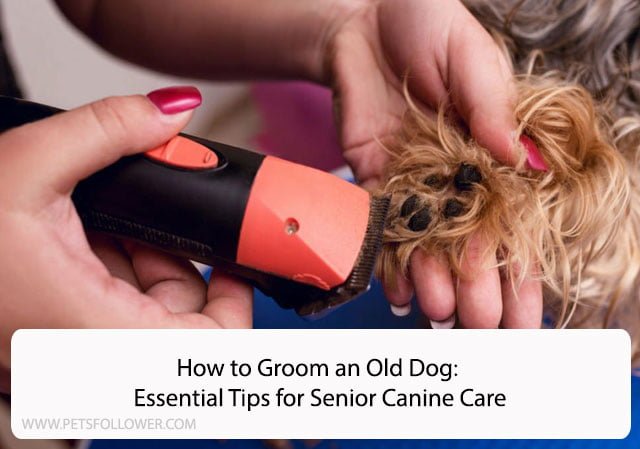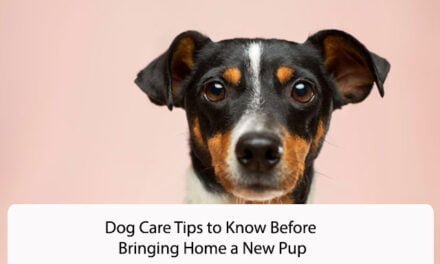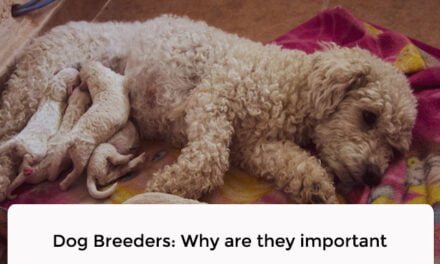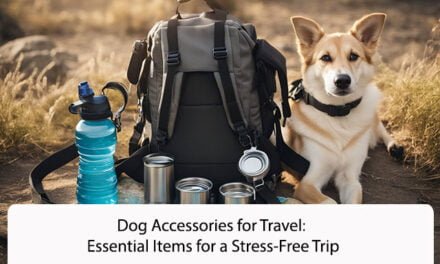As our beloved pets age, their grooming needs may change, making it crucial for pet owners to adapt their routines and care methods. Proper grooming for older dogs not only keeps them looking and feeling their best but also can help prevent certain health issues. Understanding your senior dog’s unique needs will ensure their golden years are as comfortable as possible.
One significant difference when grooming older dogs is that their skin and coat may require more attention to maintain optimal health. Special attention should be given to checking for lumps, bumps, and other signs of health concerns. Additionally, a proper grooming routine can help prevent matting, control shedding, and promote overall better hygiene for your senior dog.
To ensure your dog is properly cared for, make sure your groomer has experience with older, special needs dogs. Many groomers have had hands-on dog grooming courses, like the one here, but experience is critical to avoid mistakes and maintain your dog’s safety.

Key Takeaways
- Senior dogs have specific grooming needs to keep them comfortable and healthy.
- Regularly checking your dog’s skin and coat can help identify potential health concerns.
- A comprehensive grooming routine, including brushing, bathing, and nail care, can promote good hygiene for older dogs.
Understanding Your Old Dog’s Needs
As dogs age, their grooming needs change. It is essential to understand how these changes affect the grooming process to maintain your dog’s health and well-being. Pay attention to the tips and tricks to accomplish this for your furry friend. In this section, we will discuss the key factors to consider when grooming an older dog.
Skin and coat conditions become more prevalent in older dogs. The skin becomes thinner and less elastic, making it more susceptible to irritation and infection. The coat may also become thinner and more brittle, making it more prone to matting. Be gentle when brushing your old dog, and use a brush with softer bristles to prevent discomfort.
Diet and nutrition play crucial roles in maintaining a healthy coat. Older dogs often have different nutritional needs than younger ones. Consult with your vet about the appropriate diet for your aging dog to ensure they receive the nutrients needed for healthy skin and fur.
When grooming an older dog, it is important to pay close attention to the following areas:
- Ears: Older dogs may have more wax buildup and are more prone to ear infections. Clean your dog’s ears regularly with a gentle ear cleaner recommended by your vet.
- Teeth and gums: Dental problems are common in older dogs. Brush their teeth daily and provide dental chews. If needed, consider professional dental cleanings.
- Nails: Older dogs may be less active, leading to less natural wear on their nails. Trim their nails more frequently to prevent overgrowth and discomfort.
- Paws: Inspect your dog’s paws for cracks, cuts, or foreign objects. Older dogs may have more difficulty healing from paw injuries.
Another crucial aspect of grooming is monitoring for lumps and bumps on your older dog’s body. Older dogs have a higher risk of developing tumors and growths, so regular check-ups during grooming can help you detect any abnormalities early.
Finally, as your dog ages, be prepared for them to require more frequent grooming sessions. These sessions not only help maintain your dog’s overall health and hygiene but also provide an excellent opportunity to bond with your old dog and make them feel cherished and cared for.
By understanding your old dog’s needs and adjusting your grooming routine accordingly, you can ensure your four-legged friend stays comfortable, healthy, and happy in their golden years.
Essential Grooming Tools
Grooming an old dog requires a different set of tools than grooming a younger one. Due to their age and often more delicate skin, it is essential to use the right equipment and techniques. Below is a list of must-have tools for grooming an older dog:
- Slicker brush: This is a versatile brush with fine, short bristles that work well to remove loose hair and untangle mild mats.
- Comb: A stainless steel comb with wide and narrow teeth will help to gently remove tangles and debris.
- Grooming clippers: Invest in a good quality, quiet set of electric clippers with adjustable lengths to prevent pulling and discomfort.
- Nail trimmer: A sturdy nail trimmer designed specifically for dogs will ensure a clean, painless cut.
- Scissors: Use rounded-tip grooming scissors for trimming around the face, ears, and paws.
- Shampoo and conditioner: Choose a gentle, moisturizing shampoo and conditioner specifically formulated for older dogs’ sensitive skin.
| Tool | Purpose | Tips |
| Slicker brush | Remove loose hair, untangle mild mats | Use gently, avoid excessive force |
| Comb | Remove tangles and debris | Comb in the direction of the fur |
| Grooming clippers | Trim fur with minimal discomfort | Opt for quiet clippers |
| Nail trimmer | Clip nails safely | Clip small sections at a time |
| Scissors | Trim hair around the face, ears, and paws | Choose scissors with rounded tips |
| Shampoo & conditioner | Cleanse and moisturize sensitive skin | Use products designed for older dogs |
Before beginning the grooming session, make sure to inspect your dog’s skin for any sign of irritation, injury, or infection. Additionally, take note of any lumps or growths that may need special care while grooming.
Lastly, remember to be patient with your older dog. They may require more time and gentler handling during the grooming process due to their age. By using these essential tools and approaching grooming with care and kindness, you’ll ensure that your elderly canine companion looks and feels their best.
Regularly Brushing and Combing
Choosing the Right Brush
Selecting the right brush is crucial for your dog’s comfort and effective grooming. Here are some brush types suitable for different coat types:
- Slicker Brushes (Long-haired breeds): These brushes have fine, short wires close together. Ideal for dogs with long, silky, or curly coats.
- Bristle Brushes (Short-haired breeds): Made with natural or synthetic bristles, these brushes work well on dogs with short, smooth coats.
- Pin Brushes (Moderate to long-haired breeds): These brushes have metal pins with rubber or plastic tips. Suitable for dogs with medium to long hair and light matting.
- Undercoat Rakes (Double-coated breeds): These tools have long teeth that reach down to the undercoat, removing loose hairs. Perfect for dogs with thick double coats.
Proper Brushing Technique
- Be gentle. Start by being gentle with your brush strokes to prevent any discomfort or pain. Keep in mind that older dogs may have sensitive skin or limited mobility.
- Brush in the direction of hair growth. Always brush in the direction of your dog’s hair growth to avoid damaging the coat or causing discomfort.
- Divide and conquer. Break your dog’s coat into sections and brush one section at a time. This allows you to be thorough and helps prevent matting.
- Hold the skin taught. While brushing, hold the skin taunt to prevent pulling and discomfort.
- Check for mats and tangles. If you find any mats or tangles, use a comb to gently work them out, starting at the ends and working your way up toward the skin.
- Clean the brush regularly. During the grooming process, be sure to clean the brush frequently to remove loose hair and dirt.
By following these guidelines, you’ll maintain your older dog’s coat in a healthy and comfortable state while minimizing any stress or discomfort.
Bathing and Drying
Choosing the Right Shampoo
When grooming an older dog, it’s essential to choose the right shampoo. Look for a gentle, specially formulated shampoo for senior dogs. These products often contain natural ingredients, such as:
- Aloe vera for moisturizing
- Oatmeal for soothing skin
- Chamomile for calming irritation
Avoid shampoos with harsh chemicals or strong fragrances, as these can cause discomfort to your aging pet.
Bath Time Preparation
Properly preparing for bath time will make the experience more enjoyable and less stressful for both you and your senior dog. Here’s a checklist of items to have on hand:
- Non-slip mat – Provides traction for your dog in the tub.
- Warm water – Elderly dogs are more sensitive to temperature, so keep the water comfortably warm.
- Soft towel – To gently dry your dog afterward.
- Shampoo – The appropriate shampoo for senior dogs, as mentioned above.
- Washcloth – For gently washing your dog’s face.
- Hairbrush or comb – To gently detangle fur before bathing.
Remember, older dogs may have mobility issues, so consider using a shower attachment to make rinsing easier.
Proper Drying Technique
Drying your senior dog after a bath is crucial to prevent them from getting too cold or developing skin issues. Follow these steps for the most effective drying method:
- Gently squeeze excess water from your dog’s fur using your hands or a soft towel.
- Wrap your dog in a dry, warm towel and gently pat their fur to absorb moisture. Avoid rubbing, as this can cause tangles or discomfort.
- Use a hair dryer on the lowest heat setting, keeping a safe distance from your dog’s skin to prevent burns. Make sure to constantly move the dryer and not focus on one area for too long.
- Brush your dog’s fur as it dries to prevent matting and tangles. Be gentle, as older dogs may have thinner or more sensitive skin.
By following these guidelines, you can ensure a safe and comfortable bathing and drying experience for your older dog.
Nail Trimming and Ear Cleaning
Proper Nail Trimming Technique
It’s essential to trim your elderly dog’s nails regularly to prevent overgrowth and discomfort. Here is a step-by-step guide:
- Prepare the tools: Choose a pair of sharp and comfortable dog nail clippers. Also, keep the styptic powder or a clotting solution on hand in case of accidents.
- Find the quick: The quick is the sensitive blood vessel inside the nail. In light-colored nails, it’s visible as a pinkish area; in dark nails, look for a change in texture or thickness.
- Position: Have your dog sit or lie down in a comfortable position. Hold their paw firmly but gently.
- Clip: Cut the nails at a 45-degree angle, cutting small portions at a time to avoid the quick. Trim only the extended part of the nail.
- File: After trimming, use a nail file to smooth any sharp edges.
Keep in mind that practice and patience are crucial for a successful nail-trimming experience.
Safe Ear Cleaning Guide
Older dogs may have more ear wax buildup and are prone to ear infections. Regular ear cleaning can help prevent these issues. Follow these steps for safe ear cleaning:
- Examine: Before proceeding, check your dog’s ears for signs of infection, such as redness, discharge, or odor. If you observe any of these symptoms, consult a veterinarian.
- Choose the solution: Select a veterinarian-recommended ear-cleaning solution. Avoid using alcohol, vinegar, or hydrogen peroxide, as these can be irritating.
- Prepare: Ensure your dog is relaxed and comfortable. You’ll need cotton balls or gauze, but avoid using cotton swabs, which can push debris further into the ear.
- Clean: Hold the ear flap up, and gently pour the cleaning solution into the ear canal. Massage the base of the ear for 20-30 seconds, allowing the liquid to loosen debris within the ear.
After massaging, let your dog shake their head to remove any remaining solution and debris, then gently wipe the visible ear surfaces with a clean cotton ball or gauze.
By incorporating these techniques and practices, you will contribute to your elderly dog’s overall health and well-being.
Hiring a Professional Groomer
When to Consider a Professional
Grooming an old dog can be challenging, as their bodies can be more sensitive due to age-related issues. Here are some reasons to consider hiring a professional groomer for your senior canine:
- Physical limitations: If your dog has joint problems, mobility issues, or other physical limitations, a professional groomer will have the experience to handle their needs with care.
- Anxiety or stress: Some older dogs may become anxious or stressed during grooming sessions. A trained groomer knows how to keep them calm and comfortable.
- Complex grooming needs: If your dog has a difficult coat type, matting, or other complex grooming needs, a professional will have the necessary skills and tools.
Choosing the Right Groomer
It is crucial to select a groomer who is familiar with handling senior dogs and their unique needs. Here are some points to consider when choosing the right groomer:
- Experience: Look for a groomer with experience grooming older dogs. They should know common age-related issues and know how to handle them.
- Certifications: Check if the groomer has any certifications, such as from the National Dog Groomers Association or another reputable organization.
- Reviews and recommendations: Consult friends, family members, or online reviews to learn about others’ experiences with a specific groomer.
| Questions to Ask a Potential Groomer | |
| How long have you been grooming dogs? | |
| Do you have experience grooming older dogs? | |
| What is your process for handling dogs with physical limitations? |
In summary, hiring a professional groomer for your old dog can ensure they receive the proper care and attention they need at this stage in their life. Do thorough research and select a groomer who is experienced with senior dogs to ensure the best possible experience for your beloved companion.
Frequently Asked Questions
What are the best grooming techniques for elderly dogs?
For elderly dogs, gentle and regular grooming is key. Use a soft brush to remove loose hair and stimulate blood flow in their skin. Brushing also helps distribute natural oils through their coat. Pay attention to sensitive areas such as hips, joints, and around ears and eyes. Make sure to trim their nails regularly and keep their ears clean to avoid infections.
How often should I groom my senior dog?
Grooming frequency may vary depending on your dog’s coat type and their overall health condition. In general, brushing is recommended at least once a week, while bathing should be done once a month or as needed. Regularly check your dog for any skin irritations, lumps, or bumps while grooming.
What should I consider when grooming an old dog with health issues?
When grooming a senior dog with health issues, be extra careful with areas that may be painful, such as arthritis-affected joints. Always be gentle and supportive, using towels or padding to make them comfortable during the grooming session. Consult your veterinarian for specific recommendations based on your dog’s health conditions.
Are there any special tools for grooming an old dog?
There are specific grooming tools that can make the process easier and more comfortable for your senior dog. Some examples include soft slicker brushes, grooming gloves, and electric nail trimmers. Experiment with different tools to find the ones that suit your dog’s needs best.
How can I make the grooming process comfortable for my senior dog?
To ensure your senior dog is comfortable during grooming, choose a quiet and secure space to avoid distractions and stress. Offer treats and praise to keep them calm and cooperative. Additionally, groom in short sessions to avoid overwhelming your dog, focusing on one area at a time.
Can professional groomers provide specialized services for older dogs?
Yes, most professional groomers are experienced in accommodating the specific needs of older dogs. When scheduling an appointment, inform the groomer of your dog’s age and any health concerns. A professional groomer will adjust their techniques and grooming services accordingly to provide the best care for your senior dog.





